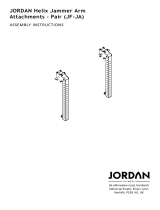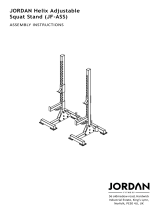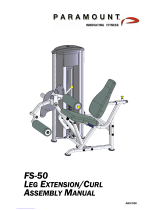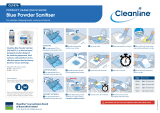Foster FS90 Original Installation And Operating Instructions
- Type
- Original Installation And Operating Instructions
Foster FS Series: The FS Series ice makers by Foster Refrigerator provide a reliable and efficient ice-making solution for commercial applications. With models ranging from FS20 to FS90, these machines can produce up to 90 kg of ice per day, meeting the demands of various businesses. Their compact design and easy installation make them suitable for tight spaces. The FS Series boasts advanced features for precise ice cube size adjustment, self-cleaning function, and a thermostat to prevent ice overflow.
Foster FS Series: The FS Series ice makers by Foster Refrigerator provide a reliable and efficient ice-making solution for commercial applications. With models ranging from FS20 to FS90, these machines can produce up to 90 kg of ice per day, meeting the demands of various businesses. Their compact design and easy installation make them suitable for tight spaces. The FS Series boasts advanced features for precise ice cube size adjustment, self-cleaning function, and a thermostat to prevent ice overflow.












-
 1
1
-
 2
2
-
 3
3
-
 4
4
-
 5
5
-
 6
6
-
 7
7
-
 8
8
-
 9
9
-
 10
10
-
 11
11
-
 12
12
Foster FS90 Original Installation And Operating Instructions
- Type
- Original Installation And Operating Instructions
Foster FS Series: The FS Series ice makers by Foster Refrigerator provide a reliable and efficient ice-making solution for commercial applications. With models ranging from FS20 to FS90, these machines can produce up to 90 kg of ice per day, meeting the demands of various businesses. Their compact design and easy installation make them suitable for tight spaces. The FS Series boasts advanced features for precise ice cube size adjustment, self-cleaning function, and a thermostat to prevent ice overflow.
Ask a question and I''ll find the answer in the document
Finding information in a document is now easier with AI
Related papers
-
Foster FADPR2 User manual
-
Foster HR80MF Start-Up And Operation
-
Foster XTRA XR600 Series Original Operation Instructions
-
Foster PS1000 Original Operation Instructions
-
Foster FADPR2 Installation guide
-
Foster HR200 User manual
-
Foster EP Series Operation Instructions Manual
-
Foster FADPRT2 Original Operation & Installation Manual
-
Foster EP1 2H User manual
-
Foster EP1440M Original Operation Instructions
Other documents
-
Falmec FFRIA24W5FS User manual
-
ITW Foster Control Thaw CT105 Operation Instructions Manual
-
Panasonic SBTP55EB Operating instructions
-
jordan JF-SRUK User manual
-
 jordan JF-JA User manual
jordan JF-JA User manual
-
 jordan JF-ASS User manual
jordan JF-ASS User manual
-
True Fitness FS-50 User manual
-
GE Film Scanning Quick start guide
-
 Paramount Fitness FS-50 Assembly Manual
Paramount Fitness FS-50 Assembly Manual
-
 Cleanline CL1076 User guide
Cleanline CL1076 User guide















